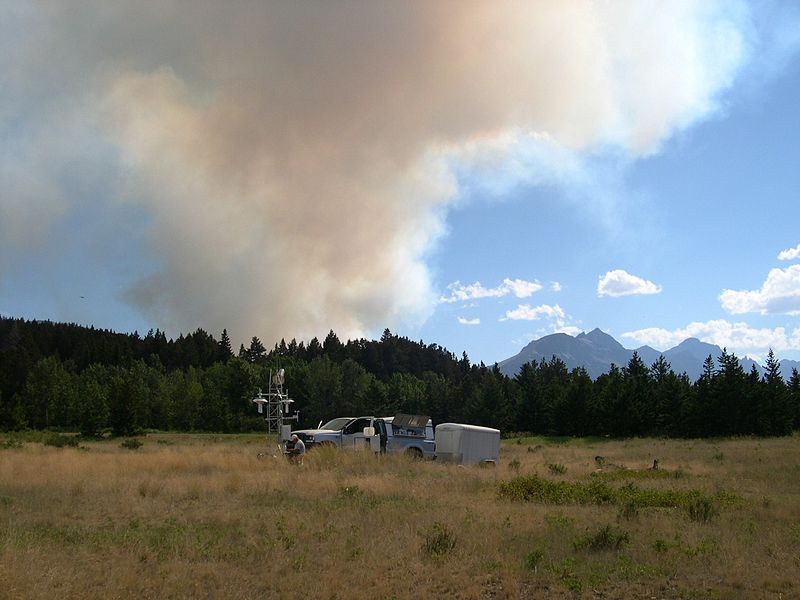Wildfires (Weather Weekly)
©The Talon News | Keith Bryant, OAR/ARL/ATDD.
Site maintenance being performed at a U.S. Climate Reference Network (USCRN) station. The visible smoke in the background is from a forest fire in Glacier National Park, a fire which led to the evacuation of St. Mary Village a few hours after the photograph was taken. Montana, St. Mary. 2006 July 29.
January 28, 2019
Wildfires, especially in recent years, have become a major issue. In 2017, roughly 10 million acres burned nationwide due to an estimated 71,500 wildfires. Wildfires can occur anywhere, but the more extreme kinds occur in grasslands and scrublands as well as dry forests. (Provided by Congressional Research Service)
How does the weather cause wildfires? Lightning strikes are the most common weather-related trigger for wildfires. When lightning strikes a tree and ignites it, a fire will start and spread in the right conditions. Strong winds can also impact power lines and create sparks that could ignite a fire.
Hot, dry, windy, and low relative humidity help fires spread. Strong winds can do a lot for a fire; they can help supply a fire with oxygen, spread embers, and heat surfaces ahead of the fire. Wildfires can also create their own weather; for instance, a fire whirl can produce wind speeds similar to a normal tornado. Rain can stop fires, but it can also make conditions worse for areas that were burned. Mudslides and an increase in flood risk can all occur after or during a rainstorm, due to the fact that soil is looser than it was before the fire.
Just like severe thunderstorms, a warning and a watch are issued ahead of time to alert firefighters and locals under the watch/warning that conditions are favorable for a fire. Remember if you ever decide to travel out west during the peak of fire season mid-August, it’s always good to know what the weather is like in these regions and the hazards that come along with it.






